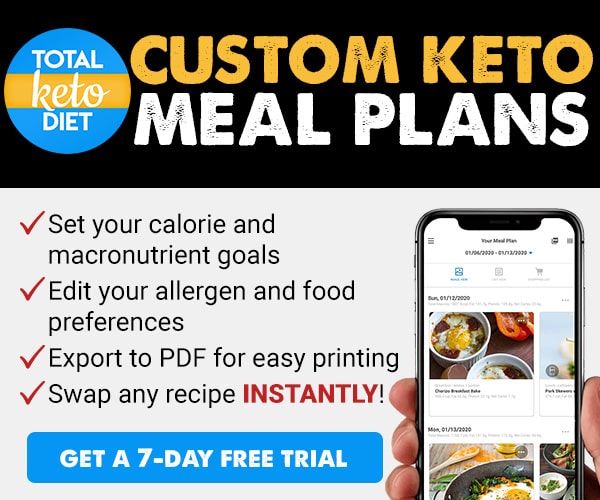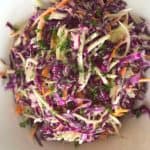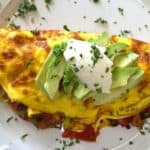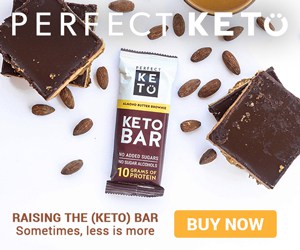Sticking to the principles of veganism and ketogenic diet sounds like a match made in heaven. But with the strict rules that come from both sides, is the vegan ketogenic diet even feasible? The answer will surprise you!
One of the biggest difficulties in transitioning to any kind of diet is saying farewell to some of the foods you are used to eating. You might have to settle for substituting ingredients for diet-compatible alternatives and you might sacrifice flavor and/or texture along the way. What exactly you will be giving up depends on what diet you decide to jump towards. For instance, hopping on the vegan bandwagon means you have to keep your hands off of meat and just about anything that comes from animals. Or you can get on the ketogenic highway and take those high-carb foods out of any future equations. But what if you wanted to do both? What if you are fully convinced that the low-carb way is indeed the way to go and you absolutely don’t want anything to do with your animal friends? It would be quite the sacrifice for sure and literally twice the challenge if you are starting from a very casual lifestyle where you don’t think twice about what’s on your plate. The trick is to not think about the challenge but to keep in mind that having a vegan ketogenic diet is indeed possible. The more you think about what you won’t be having under this diet, the less motivated you will be to make changes. What you want to do is do the opposite and the best way to build up your motivation is to have a slow and steady transition.

Preparing your Pantry
Time to kick things off with a little bit of optimism. Worried that you have to say goodbye to vegan-friendly foods like white rice, white bread, white pasta, crackers, carrots, and sugar-added cereals just because they do not fall under the ketogenic umbrella? Worry not because you still have a very broad selection of items you can keep in your pantry if you have them. Plus, if you don’t have them, think of it as a nice new adventure as you try new ingredients and foods that are sure to surprise you!
Soy Foods
Soy foods are like the savior of the vegan world thanks to its high content in protein and fat compared to other beans. However, the soybean is still a bean and beans and legumes are frowned upon in the ketogenic world due to their high starch content. What you want to do is check the ingredients whenever possible. Remember soy foods include popular vegan delights such as tofu and tempeh and not all of them are created equally. Keep the GMOs away and keep the fermented ones in like organic tempeh. Many of the “substitute meat” products have soy roots as well but again, you have to consume them in moderation unless you can absolutely confirm they do not have too many carbs. Keep foods like meatless bacon, sandwich slices, tofu dogs and other meat and fish substitutes to ease the transition and control your cravings. As long as you are not having too much protein, you should be fine!
Oils
Regarding oils, all you have to do is assume you are on the ketogenic diet and follow those rules from there. That means adding virgin olive oil to your favorite vegan-friendly salad dressings and canola oil, grapeseed oil or peanut oil for your frying, sautéing and toasting needs. Butter is dairy-based so you can’t use that for cooking but you could use coconut oil as a suitable alternative.
Condiments and Sauces
One of the simplest ways to not make your dishes so boring is to add some zest and flavors to them and fortunately, you still have a very good selection once you pump up your rack. You can keep the salt and pepper on the table as well as those fancy mixed seasonings and use whenever you wish. Worcestershire sauce or soy sauce can still be used for cooking and you can add a lot of ethnicity by adding ginger, basil, cilantro, onion, garlic, cumin, oregano and other herbs to your dishes. You can also keep some mustard and sriracha sauce just in case you have those spicy moods.
Fruits
Avocados should be on the top of your list. A half of a medium-sized Haas avocado has only less than 5 carbs. A half cup of raw strawberries or raspberries is even lower. There isn’t much else breathing room although you could eat a portion of a peach or kiwi but nothing more than that.

Vegetables
Just about all leafy greens are fair game in the plant kingdom due to their low carb counts. This includes lettuce, spinach, bok choy, chives and chard. Non-leafy veggies like cucumber, celery, bamboo shoots, asparagus and squash can be kept as well because they contain no starch. Nightshades including tomatoes, peppers and eggplants should be eaten moderately.
Seeds and Nuts
Macadamia nuts are high up on the recommendation list as they contain very little carbs and possess high amounts of monounsaturated fatty acids (MUFAs). If that isn’t enough, you may also stock up on almonds, hazelnuts, walnuts, pecans, hemp seeds, sunflower seeds and sesame seeds.
Drinks
Providing that you have all the other items listed in your pantry, all you really need to have for a diverse drinks selection is water and coffee beans. Arabica or robusta coffee beans are recommended as they have natural flavors compared to the artificial stuff. A good cup of coffee can decrease risk of type 2 diabetes and Parkinson’s disease and serves as a potent antioxidant as well. Skip the milk to avoid breaking your vegan pact and go for coconut or almond milk as a substitute. As for water, drink whenever you are thirsty and if you need some added flavors, feel free to take your berries, leafy greens and other low-carb vegan-friendly fruits and vegetables and let your imagination come up with some nice healthy drinks. Restrict your alcohol selection to just dry red or white wine and unsweetened spirits. Plan ahead and do the carbs math before making the drink.
Supplements
A ketogenic vegan diet is more restrictive than an ordinary vegan diet so you should always have a source of vitamin B12 within reach. Because micro-organisms make up this vitamin, you won’t find it in any plants. Stock up on enough supplements so you can take at least 2000 mcg every week. Failure to meet your weekly requirement could lead to nervous system damage and anemia.
Getting Started
As you can see from all the foods and ingredients you can keep in a keto vegan diet, you still have a lot of room to come up with all sorts of recipes without constantly repeating yourself to taste bud boredom. But that might not make it any easier for someone who is used to anything goes eating especially since pure vegan diet and pure ketogenic diet folks have to make their own sacrifices. The smart way to go without risking getting too disappointed is to take a gradual approach to the keto vegan utopia. Imagine yourself standing in front of a fork in the road where you can either take the vegan road or keto road. It won’t matter which path you will take because both will reach the same destination. For the uninitiated, a vegan diet is a pure vegetarian diet where you also restrain yourself from consuming any animal by-products such as eggs and milk. The ketogenic diet challenges you to limit your daily carb intake to just 15 to 50 grams.Completing the entire journey involves achieving two sacrifice milestones as you try to get comfortable with a ketogenic diet or a vegan diet and then once you are ready to go deeper, you can mix both lifestyles together and get amazing results! If you already adopted the vegan diet or the ketogenic diet, you can simply jump to the appropriate section as your journey will be cut in half!
From Keto to Keto Vegan
Hardcore keto fans are the biggest bacon lovers but if you want to go vegan, you have to give up that luxury. Even if you are down with that, it is still important to find some alternate sources of protein. Remember, ketogenic diet is all about high fat, moderate protein and low carbs. You don’t want to lose muscle mass in addition to the fats you hope to lose.

Why integrate Vegan?
If you have been rocking the ketosis phases for several weeks now, there might not be too much motivation to go vegan while still keeping the ketosis going. You simply won’t notice any downsides of sticking with the ketogenic diet as long as you have good macro management. If you are worried about high levels of blood cholesterol, integrating vegan can help you avoid saturated fats. But you have to understand that veganism isn’t just a diet; it is a movement as well. Avoiding animal products means lowering carbon footprint which is great for the environment. Other folks go vegan simply because they watched enough documentaries and other videos about some of the darker sides of animal farming industry. Even if you don’t watch that content, going vegan means that you are proudly standing up for animal rights!
Making the Transition
The most comfortable transition away from meat products is to go for the soy-based substitutes and those cleverly crafted “fake meats” that are normally made of eggplants, onions and all sorts of fancy spices and sauces to give off those amazing flavors. Many folks in the ketogenic vegan community recommend Quorn’s Vegan family of products and Field Roast products but be sure you don’t lose count on your carb intake. Also make sure that the ingredients of these meat substitutes don’t include egg whites. Taking the time to read the nutrition facts is crucial to being a true vegan without cheating.If you want to stay away from soy for whatever reason, the answer lies in protein powders, nuts and seeds. What you want to target is a protein powder that offers not more than 4 grams of carbs per serving. It might take a few trials and errors to find the one you want as some contain artificial sweeteners. Also stay clear of the ones that are made from egg whites. Nuts have to take a more central stage in the vegan ketogenic diet because most of them contain roughly 5 grams of carbs and around 6 grams of protein for every ounce. They also have high amounts of healthy fats so you are sure to feel full after a typical serving. The actual figures can vary though giving you all sorts of possibilities when planning your macros. Walnuts, macadamia nuts, brazil nuts and pecans all have less than 2 grams of carbs. Almonds are a little bit heavier at close to 3 grams of carbs and have slightly fewer grams of fat. Although nuts are anti-inflammatory and have plenty of good nutrients, some of the variants can be more salted or roasted in an oil. The delicious taste might tempt you to chow down on more nuts than you should. Do your best to moderate your intake or else you’ll end up taking in more calories and carbs than you should! Watch out for packed shelled peanuts that rely on gelatin as an additive. Those types of peanuts are not vegan friendly.Seeds are also like nuts in the sense that you might be tempted to overeat them (avoid the temptation!) but these embryonic plants have a much better ratio of Omega-6:Omega-3 polyunsaturated fats than nuts. One of the challenges in the ketogenic diet is to keep the ratio of Omega-3 to Omega-6 close to 1:1 as much as possible. For carb counting, flaxseed is on the top of the list with about a half gram of carbs per half ounce serving. Hemp seeds are a close second containing 1.3 grams per ounce and chia seeds with 1.7 grams of carbs. Chia seeds are higher in fiber though. Remember that fiber doesn’t interfere with ketosis since it isn’t digested.
From Vegan to Keto Vegan
Without meats and their derivatives in the equation, it could be difficult to imagine what life would be like if you had to narrow down that plant-based diet even further. It might sound really hard to figure out at first but once you have figured it out, that limited selection will inspire you even more to try out interesting combinations and dishes to make your keto vegan lifestyle more enjoyable. And because you have fewer food choices, you are less likely to make mistakes in fitting everything into your macros.

Why integrate Keto?
Plant-based foods sound cleaner compared to fatty salty meats and it has the nutrition facts to back things up too but that doesn’t mean ignoring meats and dairy products will suddenly make you a healthy person. Each of the plant-based foods have their own nutritional values and having too much of something could throw you right off and you might not get the weight loss benefits you wanted even after a considerable period of time. A typical vegan diet is still very heavy on carbs and that could still lead to some adverse health effects. Vegans still have to strategically plan things to avoid those pitfalls. By implementing a ketogenic rulebook without sacrificing the vegan principles, you can take a very narrow and sure path to a healthy diet.
Making the Transition
Going from vegan to ketogenic vegan is easier said than done. The “easier said” part can be viewed as good news to some degree because you are only taking away some vegan choices rather than adding new ones (assuming you are very familiar with the vegan selection). It is more on changing quantities of the keto-friendly stuff to fill in the missing gaps.To kick things off, all grains must go! That includes any food made from rice, wheat, barley, cornmeal or oats. Even a tiny amount of grains will put you over your strict carb allotment in no time. This also includes pasta, tortillas, oatmeal and all forms of breakfast cereals. But don’t think that your baking days are over because you can make some really healthy low-carb vegan treats using almond flour, coconut flour, hazelnut flour, flaxseed flour and psyllium powder. Transitioning to the ketogenic diet also means giving up some veggies. You can preach all the health benefits these natural wonders give but carbs will always be the deal breaker. Several of these foods contain starch which is a big no in the ketogenic world and that’s all there is to it really. You are going to want to avoid potatoes, corn kernels, all forms of squash, peas and even beets. A cup of raw carrots has about 9 grams of carbs and rutabagas is slightly lower but it is still better to avoid than accidentally eating too much.The good news for vegetarians is that all other low carb veggies are very much fair game but for fruit lovers, prepare for a lot of sacrifices. To cut to the chase, the only real fruits you can eat are avocados. No need to fret because avocados are amazing fruits! They have potassium, copper, folate, fiber, magnesium, Vitamin C, Vitamin E, Vitamin K and more B vitamins than a typical fruit. All that comes just 2 carbs per 100 grams and loads of healthy fats! In addition, avocados are effective in controlling hypertension. Doctors will tell you that other fruits like bananas and grapes are good for you but it’s the sugars that can interfere with your ketogenic momentum. Sugar is responsible for raising blood glucose levels Therefore, you need to avoid 100% fresh fruit juices as well as jams, dried fruits. Stick to the drinks and beverage ideas mentioned earlier.
The Secret to a Smooth Transition
No matter what transition you are taking to this dream diet, you are going to hit some speed bumps along the way. Suddenly subtracting your favorite foods is by no means an easy task and suddenly forcing yourself to do so isn’t going to be all that fun. The trick is to get comfortable with the foods you need to eat and not worry too much about the carbs and macros just yet. If you are not familiar with some of the foods and ingredients, experiment and discover your favorites and once you got a good habit and recipe selection going, you can start planning your carb intake and slowly take away the high-carb foods or the non-vegan foods.
Summary Guidelines
In a nutshell, the ketogenic diet is low-carb and lots of fatty meats while the vegan diet is high-carb and no meats. When you put these two contrasting diets together, you are shooting for low-carb and no meats including dairy. If that is still a scary start, consider these summary guidelines.
• Keep your daily carb allowance below 50 grams• Keep your daily fiber allowance between 25 to 35 grams.• Keep your fat consumption between 50 to 60 grams.• Keep your daily calorie count within the 1,400 to 1,500 range.• Feel free to conduct short-term experiments to get a feel of the transition• Have enough protein to encourage muscle mass buildup but not too much to kick yourself out of ketosis.• Stay away from starchy plants and sugary fruits• Have a steady supply of vegan supplements (Vitamin B12 and D are the most important)• People younger than 18 years old should avoid the vegan ketogenic diet.
The vegan ketogenic diet is not a diet you want to rush and you can expect the typical temporary side effects associated to ketogenic and vegan diets if you are not used to one or the other. This is why a slow transition is recommended as it will get you fully acquainted with the foods that matter most. With some determination, consistency and patience, your body should get used to the diet and from there on out, you can enjoy the best of both worlds. All that hard work will be worthwhile and you can let your creativity with the available foods and ingredients shine as you come up with lots of very unique and highly healthy recipes. Or you can just search them online! Good luck!











